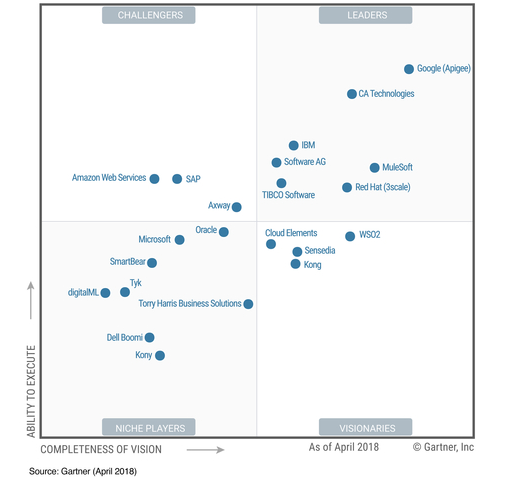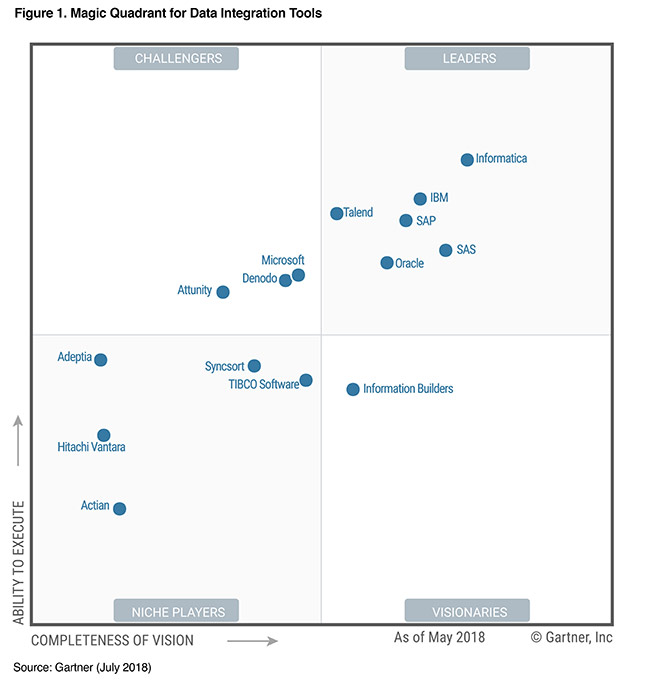Data Bus: A Solution Worth Trying
These days, data is of great value to any company. Collecting, storing and finally putting it to work is often among the key aspects of any company’s operations. Usually, data is sourced from different systems within the organization. As the business grows, so does the number of systems. But they cannot function as completely independent entities.
Read this article to find out:
- What a service bus is
- What tools to choose for data integration
IT system integrations – Mule ESB
In order for the systems within the company to be used to their full extent, they must be able to exchange information and share services with each other. It is only with this synergy that processes can be improved and system capabilities used appropriately. Due to a large number of points to communicate, connecting them one to one is hardly effective. For this reason, you’ll be well-advised to use tools to support many integrations in a well-thought-out, structured and flexible manner.
In response to the need for data exchange and service sharing, ESBs (Enterprise Service Buses), also known as data buses, appeared on the market. However, ESBs are more than a medium for transmitting data. This is because they come together with various services that can transmit data, ensure its availability, and process it, in addition to performing specific operations.
Unity Group as an integrator of solutions in various technologies
When looking for a company to implement an ESB for you, find one that already has some experience. ESB is poised to become a highly strategic part of many organizations’ systems infrastructure, which, if properly implemented, will serve and benefit the company for a long time. Selecting specialists with a stable position in the market will also be a good strategy. After all, the ESB will need to be maintained, upgraded, monitored, fixed, connected to new systems and, over time, used for further integrations or services. This is why you should bet on long-term cooperation with professionals in this matter.
At Unity Group, we have a history of numerous Mule ESB and WSO2 bus implementations along with many certified developers of these solutions. We also had a chance to use the Talend tool (MDM approach) in research projects. Our experience is based on implementations in various industries, including the financial sector, as well as the areas of accounting, ICT, logistics, and e-commerce. Before implementing the integration bus, we analyze and introduce the client to the subject of integration. This helps identify critical areas for integration and priorities for subsequent implementations that will bring tangible benefits to the company.
Unity Group is also a WSO2 partner. This partnership confirms our high competencies in the implementation of this product. Additionally, as a partner, we can obtain support directly from the manufacturer, e.g. in the case of unusual problems and solutions. By cooperating closely with WSO2, we are also obliged to constantly develop our competencies and knowledge about the product. So we are certain that any implementation we undertake will not generate any technological debt related to the use of an outdated approach or obsolete technology.
Solution providers vs competition
As no industry is free from competition, there are many service buses on the market. However, think well before opting for a solution, as this type of product is implemented to serve us for many years. It can be used to replace individual systems and change integration processes without turning the whole infrastructure upside down. This is a much simpler and more flexible approach than in the case of direct connections between all systems, where the replacement of one system destroys the entire network of complex integrations.
To get to know key ESB providers, you may want to look into the Gartner Magic Quadrant, which shows integration-related areas with their different approaches. Figure 1 shows the Magic Quadrant for Full Lifecycle API Management, which presents API-based solutions and API management from the very beginning of integration. In turn, Figure 2 presents Enterprise Data Management tools used mainly in MDM and ETL solutions. When looking for the right solution for your business, bear in mind the class of the solution.


Mule ESB and WSO2 vs competition
Currently, there are many different types of integration solutions (ESB) on the market. When opting for any specific solution, conduct thorough research to make sure it will be sufficient for your systems. The league table is topped by the Apigee platform provided by Google. However, this tool uses a cloud-based approach, which may not always attract clients who wish to have a solution sitting on an in-house machine.
The Mule ESB and WSO2 platforms are among the most complete solutions you can get in their class. Mule ESB has a highly advanced tool in the form of the Anypoint Platform, which will enable you to design, build and manage APIs and integrations. Additional components from MuleSoft can be used to monitor and create APIs by means of the RAML model language. In this way, you can quickly create new integrations. Additionally, using the API-led connectivity approach, you can safely build integration solutions within the company without exposing specific data to the outside world. WSO2, on the other hand, is an open-source solution with many components that can be brought together as needed. With the carbon framework of WSO2, many components can be formed and used, which allows many problems to be addressed.
ETL tools for data integration
ETL tools are solutions similar to those described earlier. They are also used for integration purposes, mainly to retrieve information from databases. Their main task is to extract data from various sources, transform them appropriately and feed them into the database. These tools are more like MDM solutions and are used to a greater extent for data management than for system integration.
The solution offered by US-based company Informatica is a clear industry leader. This product is very much focused on data integration rather than on the application. Handling APIs and connecting systems are certainly not its biggest strengths. In addition, the availability of ready-made, properly working connectors is lower than in the case of Mule ESB or WSO2. Informatica is easy to use, but hardly customizable. It can be described as a “black box” created to achieve specific goals. This is in contrast to the previously described products, which are fully adapted to the client and designed to meet the client’s specific needs – not only in terms of data integration, but also with regard to ensuring the cooperation of systems and sharing services.
Talend, a tool used by Unity Group, is also among the group of leading solutions. The platform itself has many different Open Source applications, which allows you to choose the right tool for your business. Find more about the capabilities of Talend here.
Summary
Looking at the competition and the number of suppliers and solutions, we may conclude that Mule ESB is one of the most comprehensive tools. Nevertheless, WSO2 is among the leaders that can define new approaches to integration going forward. Both tools are well-suited for integrating multiple systems in an organization, not only in terms of the data as such but also with regard to the cooperation between various applications. They are versatile and upgradeable solutions in addition to being well-secured and scalable, which is very important when their long-term use is expected. With their open nature, Mule ESB – Community and WSO2 – open source, the solutions can be customized to your needs, without relying on the manufacturer to release new versions. Where data collection is the goal of integration, you may consider using a smaller tool such as Talend.
As regards other solutions from the Gartner chart, their implementation may turn out to be risky if you think long-term, as they are often characterized by a high cost of ownership. In the case of tools that are less popular in our location, access to specialists and further maintenance and development may be very difficult.







